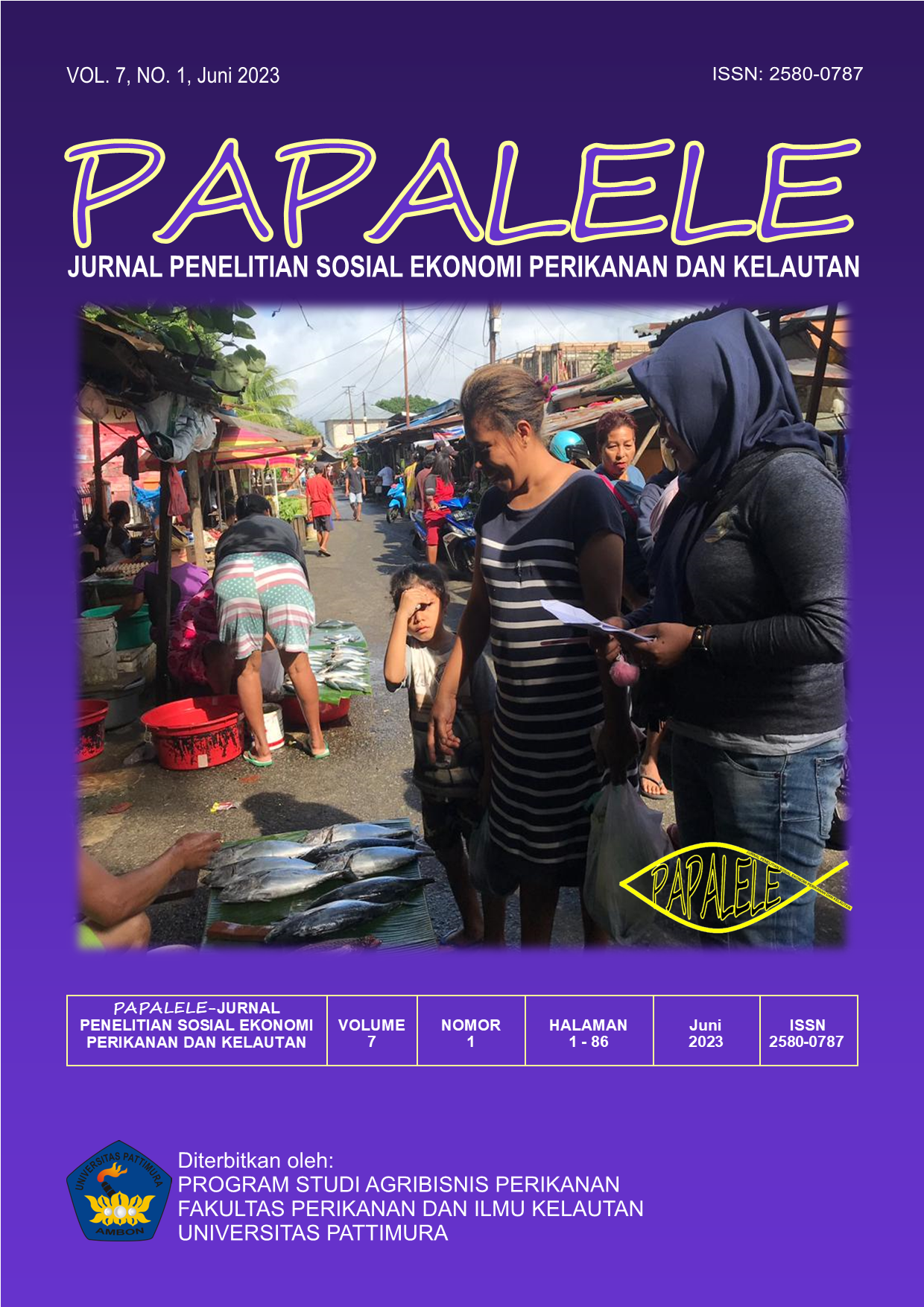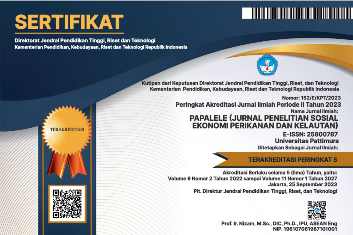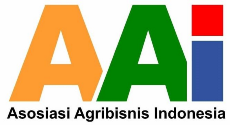EFISIENSI KINERJA SASI TERIPANG PASIR (Holothuria scabra) DESA TUNGU KEPULAUAN ARU
Abstract
The sandfish sea cucumber, Holothuria scabra, has economic value and is considered expensive, making it a target for utilization. The sandfish sea cucumber is found in the village of Tungu, but with the implementation of sasi (a traditional system of resource management), it is expected to ensure the sustainability of the sandfish sea cucumber resources. In reality, every time the sasi period is lifted, sandfish sea cucumbers are harvested without any size limitations and there are illegal captures by fishermen from outside the Aru Islands using complete diving equipment. Given these conditions, it is suspected that the sandfish sea cucumber population may decline. Therefore, this research was conducted in August-September 2018, with the aim of assessing the performance efficiency of the sasi system for sandfish sea cucumbers in Tungu Village. Data collection was done through observation and interviews with intentionally selected respondents and analyzed descriptively using several indicators. The research results showed that the catch of sandfish sea cucumbers amounted to 2,240 kg of dried weight, with varying selling prices according to size. The analysis of performance efficiency indicated that the sasi system for sandfish sea cucumbers in Tungu Village falls into the moderate category.
Downloads
References
Dewi KH. (2008). Kajian ekstraksi steroid teripang pasir (Holothuria scabra J) sebagai sumber testosteron alami [disertasi]. Bogor. Sekolah Pascasarjana, Institut Pertanian Bogor.
Etlegar D. (2013). Peran lembaga adat sasi dalam pengelolaan sumberdaya dusun di negeri Allang kecamatan Leihitu Barat, kabupaten Maluku Tengah. Skripsi. Departemen Manajemen Hutan. Institut Pertanian Bogor. Bogor.
Kusumadinata A. (2015). Peran komunikasi dalam menjaga kearifan lokal (Studi kasus sasi di desa Ohoider Tawun, kabupaten Maluku Tenggara). Jurnal Sosial Humaniora Vol. 6 (1) : 23-32.
Lewerissa, Y.A. (2017). Perikanan Teripang Dan Efisiensi Kinerja Sasi Di Negeri Porto Pulau Saparua dan Desa Warialau Kepulauan Aru. Jurnal Amanisal PSP FPIK Unpatti-Ambon Vol 6. No. 2. ISSN. 2085-5109
Martoyo J, Aji N dan Winanto Tj. (2004). Budidaya Teripang. Penebar Swadaya. Jakarta.
Novaczek I, Harkes, IHT, Sopacua J., Tatuhey MDD. (2001). An institutional Analysis of Sasi Laut in Maluku, Indonesia. ICLARM-The World Fish Center. Penang, Malaysia. 327 hal.
Pattinasarany, M.M dan Manuputy, G.D. (2018). Potensi Jenis Teripang Bernilai Ekonomis Penting Di Ekosistem Padang Lamun Perairan Desa Suli Maluku Tengah. Jurnal PAPALELE Volume 2 Nomor 1. ISSN-2580-0787.
Purcell, S.W. (2014). Value, Market Preferences and Trade of Beche-De-Mer from Pacific Island Sea cucumbers, PLoS ONE, 9(4). 1- 8. https://doi.org/10.1371/journal.pone. 0095075. PMID: 24736374; PMCID: PMC3988149.
Yusron, E. (1992). Beberapa Catatan Tentang Teripang di Perairan Maluku. Lonawarta XV (2) 1992: 12-17.
Copyright (c) 2023 Yona A. Lewerissa, Frederik W. Ayal, Yohana N. Letsoin

This work is licensed under a Creative Commons Attribution-NonCommercial 4.0 International License.











